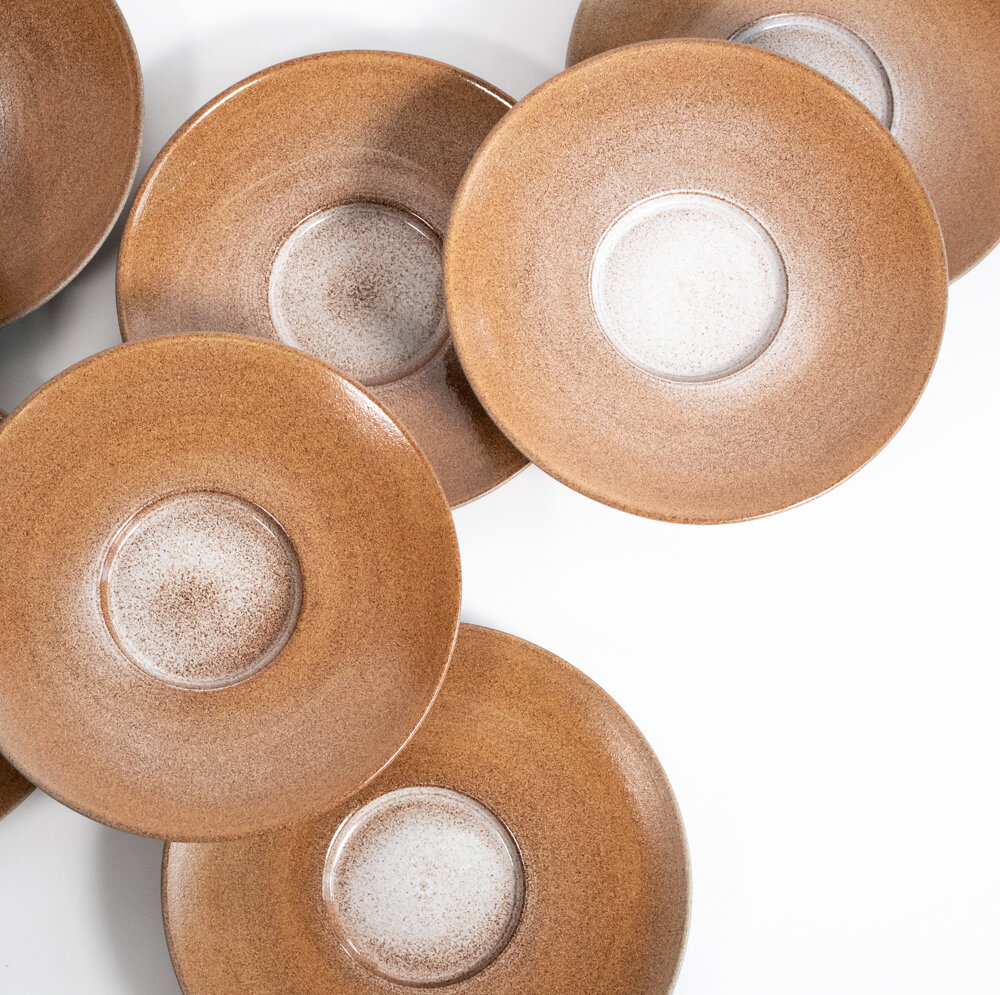Re-making Re-naa.
The first restaurant in Norway to get a Michelin star outside of Oslo, Re-naa in Stavanger is in a class of their own. They recently reopened in a new location, which offered some nice challenges for us to work on. Ceramic beetroots, hotpots with handles and handpainted cups!
Ceramic beetroots made from red stoneware clay with a violet glaze on the inside. It is always a challenge to make ceramic objects with high precision; this is why we fire the top and bottom together to avoid deformation.
Flower containers made from very rough clay. The ball-like objects have some small and some larger holes to offer flexibility when it comes to flowers. Collaboration with Stilken & Strøm.
Photo Tom Haga.
Photo Sverre Hjørnevik.
Photo Sverre Hjørnevik.
The cups are made from a rough clay and handpainted with ceramic underglaze colour.
Thick glass bowls.
The hotpots are glazed on the inside of the bowl part and the outside of the lid part.
We developed a new plate for the reopening of Renaa. It is based on our Semi/26 plate, but with a defined centre and a wide rim. This version also has a relief (physical pattern) on the rim part.
The difference in colour between the centre and the rim comes from the amount of glaze - in this case more glaze gives a whiter colour.










